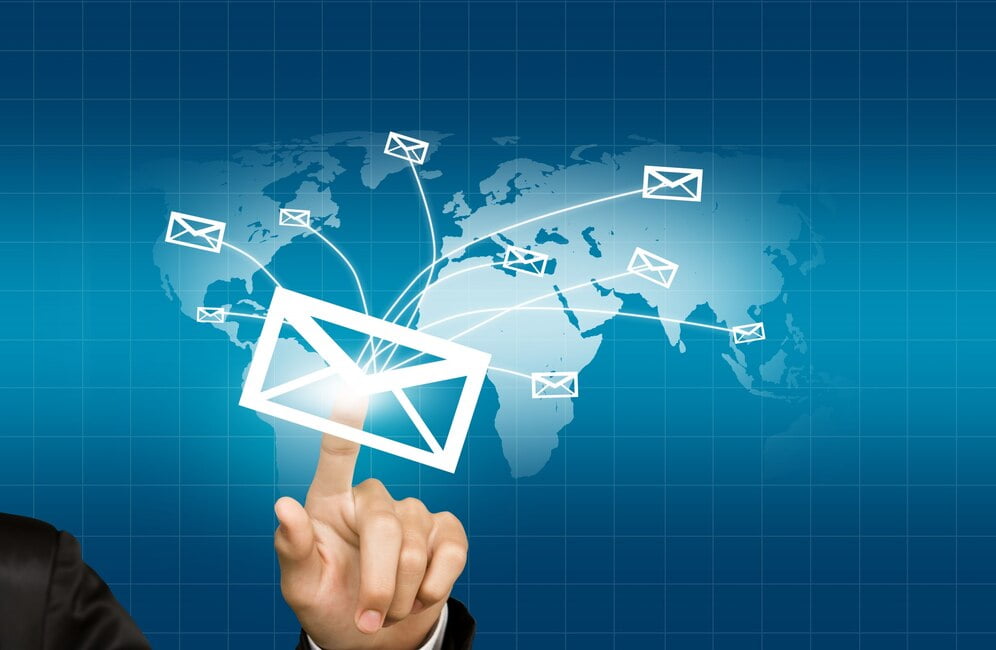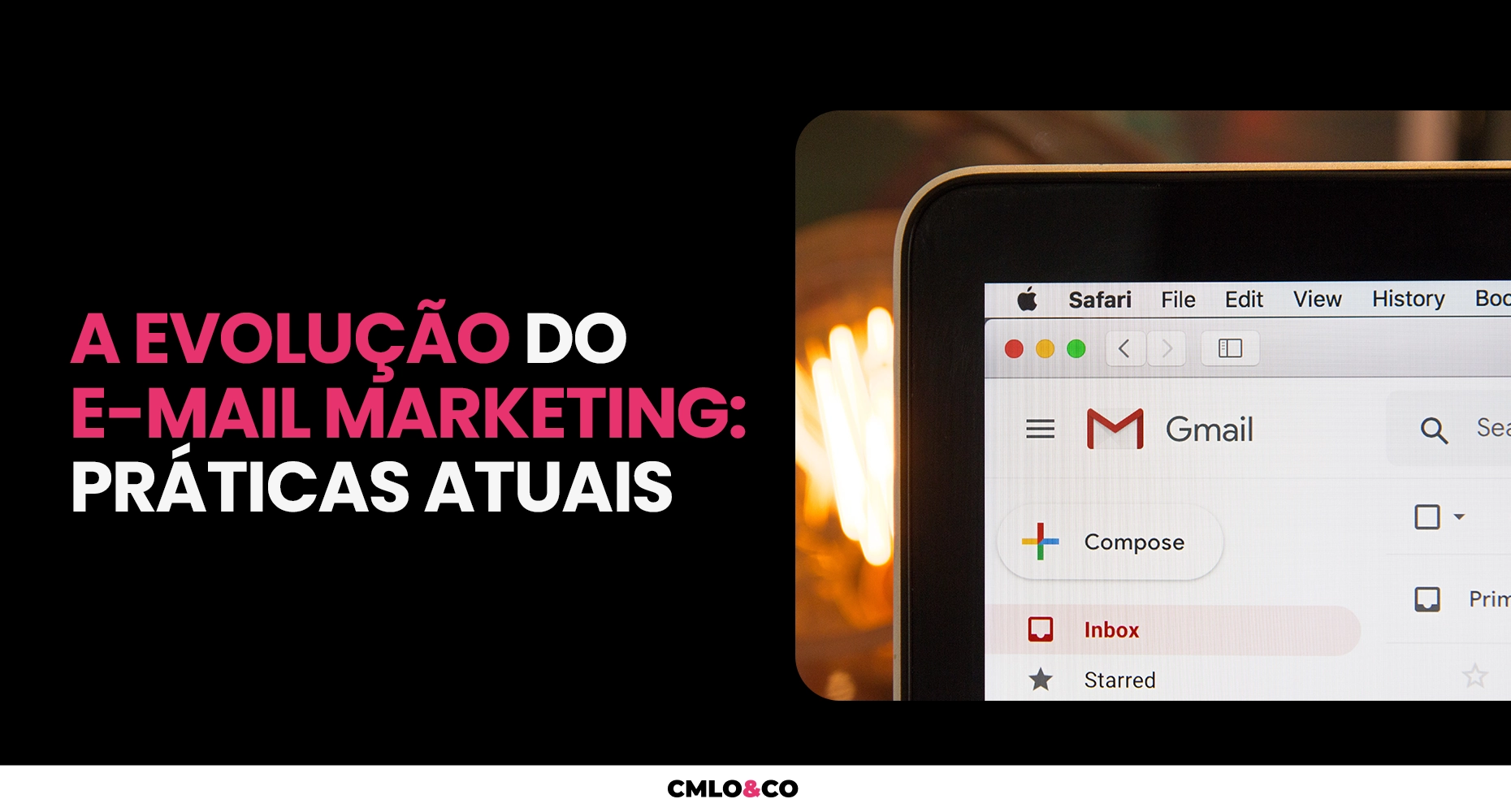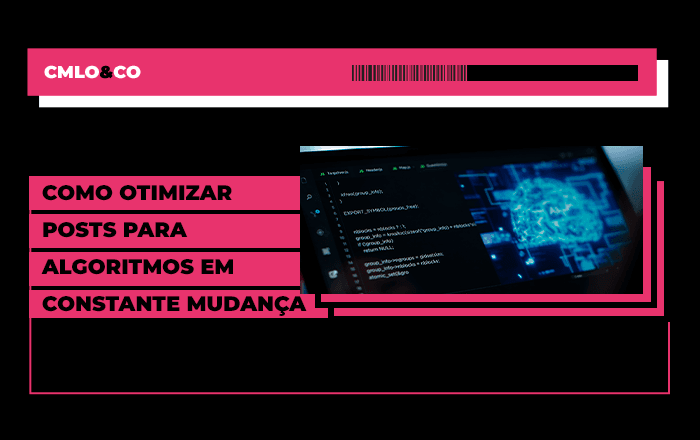Have you received any e-mail from a company offering a product, service or content that interests you? If so, have you already been impacted by e-mail marketingone of the oldest and most effective strategies of the digital marketing.

But what is email marketing and what is it for? When and in which cases should it be used? What are the advantages of this tool? How did evolution of email marketing over the years?
In this article, we'll answer all these questions and show you how email marketing can be a powerful ally for your business. Follow along!
What is e-mail marketing and what is it for?
In principle, it is a form of direct communication between a company and its potential or current customers, by sending commercial emails. The purpose of the message can range from promoting a brand, a product or a service, to educating, informing, engaging or retaining the loyalty of the target audience.
As such, e-mail marketing can also be useful for a variety of purposes:
- Increase traffic to your website or blog
- Generate leads (qualified contacts) for your business;
- Nurture leads with relevant and personalized content;
- Increase your company's sales and turnover;
- Improving relations with the public;
- Increase customer retention and loyalty.
When and in which cases should it be used?
Email marketing is a versatile strategy that can be used at various stages of the customer's buying journey, from attraction to loyalty. Here are some examples of when and in which cases to use it:
- To attract visitors to your website or blog by sending emails with educational, informative or entertaining messages that pique the interest of your target audience.
- To generate leads, by sending offers of rich materials such as e-books, webinars, infographics, among others, in exchange for users' contact details.
- In strategies of lead nurturing, by sending emails with more in-depth content that helps solve your potential customers' questions and problems and leads them through the sales funnel.
- To sell more by sending commercial messages with product or service offers, discounts, promotions and launches that encourage leads to make the decision to buy.
- In actions to improve the relationship with customers, sending emails with tips, news, feedback or satisfaction surveys, which show that you care about them and want to offer the best possible experience.
- To increase customer retention and loyalty with exclusive content, benefits, loyalty programs and referrals that make customers feel valued and want to keep buying from you.
Advantages
Email marketing offers several advantages for your business, such as:
- Low cost, because sending emails is much cheaper than other forms of advertising, such as ads in traditional or digital media.
- High reach, since e-mail is one of the most widely used tools on the Internet, with more than 4 billion users worldwide.
- Possibility of segmentation, as e-mail marketing allows you to segment your audience by various criteria, such as age, gender, location, interests, etc. This way, you can send more personalized and relevant messages to each group of contacts
- Easy measurement, as you can track the results of your email marketing campaigns in real time, such as open rate, click rate, conversion rate, bounce rate, etc., making it easier to analyze the results and optimize strategies.
- High return, since email marketing has one of the best returns on investment (ROI) among digital marketing strategies. According to a DMA survey, for every R$ 1 invested in e-mail marketing, the average return is R$ 42.
- Interactivity, because you can create emails that encourage your audience to interact with your brand, such as call-to-action buttons, polls, videos and gifs, for example. This way, you can increase the engagement and loyalty of your contacts.
Evolution of email marketing: from the first send to current practices
Email marketing was born in 1978, when Gary Thuerk, an employee of Digital Equipment Corporation (DEC), sent an email to around 400 people, promoting the company's computers. This, by the way, was considered the first commercial email in history and generated around 13 million dollars in sales for DEC.
Since then, the strategy has undergone several transformations, keeping pace with technological and user behavioral changes. Here's a look at the evolution of e-mail marketing up to the current practices:
Newsletter
This is one of the most popular email marketing strategies. It basically consists of a type of commercial email that aims to inform, educate or entertain readers through varied content.
The newsletter is sent out on a regular basis (weekly, fortnightly, monthly) and helps maintain the relationship with the public and increase brand authority. However, it doesn't allow for segmentation of the contact base, which makes the strategy generic and often of no interest to many people.
Segmented e-mails
Unlike a newsletter, segmented emails are sent to specific groups of people, according to criteria such as the profile, behavior and preferences of the contact base. We can therefore say that this strategy is the evolution of email marketing.
Its great advantage is that it allows for more personalized and relevant communication with the public, increasing the chances of engagement and conversion. After all, with segmented emails you only send messages to people who are interested in the solutions you offer.
Email marketing automation
Still on the subject of the evolution of email marketing, automation, as its name suggests, is a way of automating the sending of emails using specialized software or platforms.
Email marketing automation allows you to create nurturing flows, which are sequences of emails that are triggered according to users' actions (such as opening an email, clicking on a link, etc.).
With this, the tool helps you save time, optimize resources and improve the results of your campaigns.
Dynamic lists
These are contact lists that are automatically updated according to the consumer's purchasing journey.
Dynamic lists help you understand, for example, which contacts opened your last email, clicked on a particular link or converted on a particular offer.
With this email marketing strategy, you can further segment your contact base and send more assertive and efficient messages.
Workflows
However, the evolution of email marketing doesn't stop there and finally arrives at workflows. But do you know what this means?
In a nutshell, we can conceptualize workflows as workflows that are created to automate your company's internal or external processes by sending emails.
Workflows can be used for a variety of purposes, such as sending purchase confirmations, payment reminders, delivery notifications, etc. It's even possible to take the strategy beyond the email inbox, interacting with the public on social networks and other points of contact between the brand and them.
E-mail marketing in current times
Forty-five years on, email marketing continues to evolve and is one of the most widely used strategies by companies around the world.
According to StatisaAccording to the report, around 45% of organizations use the strategy to send promotions, generate leads and increase sales. In Brazil alone, more than 8 billion commercial emails are sent every day, with an opening rate of 20.39%, according to GetResponse data.
Currently, the main email marketing strategies used by brands are segmentation, personalization of content and optimizing messages for mobile devices.

Is it still worth investing in email marketing?
Given the evolution of email marketing and the data presented, it's clear that the strategy is still very valid and effective for your business. After all, it allows you to communicate with your audience in a direct, personalized and measurable way, generating more traffic, leads, sales and loyalty.
However, to be successful with email marketing, you need to rely on a marketing and advertising agency that specializes in creating the best strategies for sending commercial emails for your business, from capture to conversion.
You can count on CMLO&CO, an agency with extensive experience in the digital market and complete solutions for your business to grow on the Internet.
We take care of everything for you: from creating the layout and content of your emails to configuring the tools and reports. So you can focus on what really matters: your business.
Contact us today and find out in practice how to boost your results with email marketing!







